Olympic Football: History, Format, and Memorable Moments
What makes football at the Olympics so uniquely thrilling compared to the World Cup or continental tournaments? Olympic football has a rich and often underrated legacy that has shaped generations of players and inspired nations. While it might not hold the same prestige as the FIFA World Cup, it remains a key arena for youth development, historic upsets, and iconic moments.
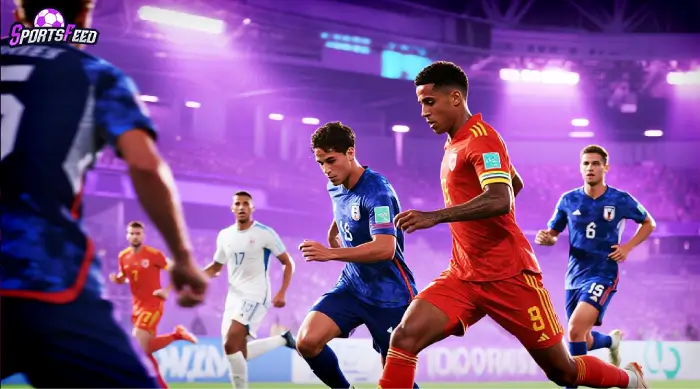
The Historical Evolution of Olympic Football
In keeping with the sport's development, football summer Olympics has changed from an amateur showcase to a worldwide platform for up-and-coming talent. From its inception in 1900 to the 2024 Summer Olympics in Paris, football's history has been molded by the men's and women's competitions, which combine youth and status.
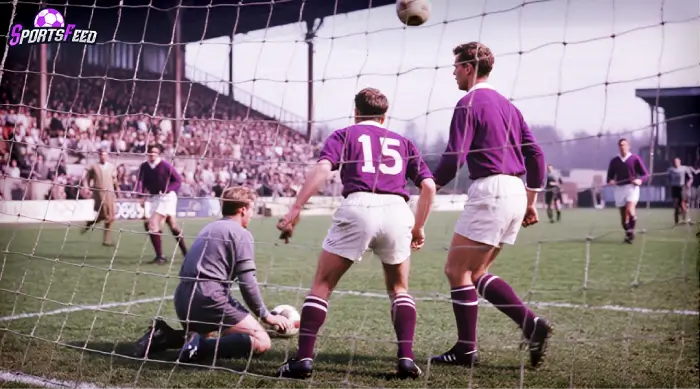
Men’s Tournament Evolution
When football made its Olympic debut in 1900, amateur teams like Upton Park in Great Britain took home gold. Senior teams were present in the first editions (1900–1928), but because of professional disputes, FIFA created the World Cup in 1930, which lessened the emphasis on the Olympics. In 1936, the IOC limited appeal by enacting an amateur-only rule. By 1984, the event had been reinvigorated with an emphasis on youth thanks to the U-23 format, which had included three players who were overage since 1996. According to IOC statistics, Spain won the gold in 2024, while Hungary and Great Britain are in first place with three apiece.
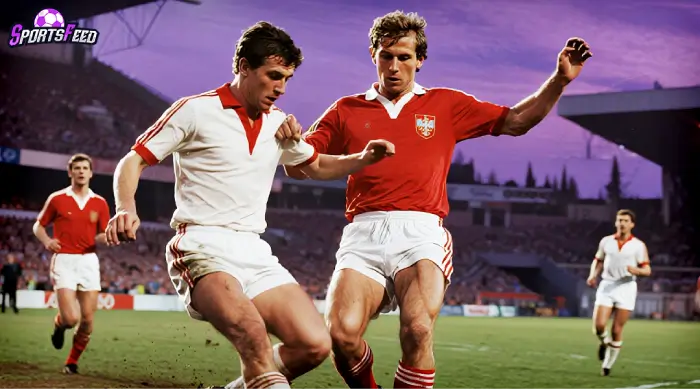
Women’s Tournament Emergence
Women’s Olympic football began in 1996 in Atlanta, reflecting football’s growing inclusivity. The U.S. dominated early, winning three of the first four golds (1996–2008), with stars like Mia Hamm shining. Unlike the men’s U-23 limit, women’s tournaments feature senior national teams, aligning with World Cup prestige. By 2024, 12 teams competed, with the U.S. reclaiming gold in Paris. The tournament’s global appeal, boosted by players like Brazil’s Marta, continues to grow, per FIFA, inspiring investment in women’s football worldwide.

Current Olympic Football Tournament Structure
The 2024 Paris Olympics football tournaments, held from July 24 to August 10, featured 16 men’s and 12 women’s teams across seven French stadiums. With distinct age rules and qualification paths, the tournaments blend youth and senior talent, per FIFA and IOC.
Age Limits and Squad Rules
Men’s Olympic football restricts players to under 23 (born on or after January 1, 2001), with three over-age players allowed per 18-player squad. Women’s tournaments have no age limits, featuring senior players, with 18 players and four reserves, per FIFA. Clubs aren’t obligated to release men’s players.

Qualification Process
Teams qualify via continental tournaments, with France automatically included as hosts. Men’s U-23 events, like the AFC U-23 Asian Cup, determine 15 men’s and 11 women’s spots across six confederations, with one AFC-CAF playoff, per FIFA.
|
Confederation |
Men’s Spots |
Women’s Spots |
|
Europe (UEFA) |
3 |
3 |
|
Africa (CAF) |
3 + 0.5 |
2 |
|
Asia (AFC) |
3 + 0.5 |
3 |
|
South America (CONMEBOL) |
2 |
2 |
|
North America (CONCACAF) |
2 |
2 |
|
Oceania (OFC) |
1 |
1 |
Tournament Format
The men’s tournament features 16 teams in four groups of four, with top two advancing to a single-elimination knockout stage (quarter-finals, semi-finals, bronze, and final). The women’s tournament has 12 teams in three groups, with the top two and the two best third-placed teams advancing, per the IOC.
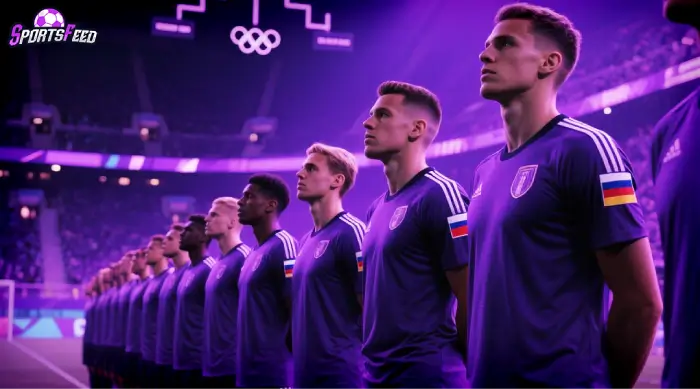
Olympic Football vs. FIFA World Cup
Olympic football and the FIFA World Cup, while both global showcases, differ significantly in structure and focus. The Olympics emphasize youth development, while the World Cup is the pinnacle of senior international football, drawing massive audiences. Olympic football vs FIFA World Cup, below we will explain the differences:
|
Feature |
Olympic Football |
FIFA World Cup |
|
Age Restrictions |
Men: U-23 with 3 over-age; Women: None |
None |
|
Team Composition |
Men: 18 players; Women: 18 + 4 reserves |
26 players |
|
Number of Teams |
Men: 16; Women: 12 |
Men: 32 (48 in 2026); Women: 32 |
|
Tournament Length |
~2 weeks (e.g., July 24–Aug 10, 2024) |
~4 weeks (e.g., June 11–July 11, 2022) |
|
Frequency |
Every 4 years (Olympic cycle) |
Every 4 years |
|
Prestige |
High, but secondary to the World Cup |
Highest in international football |
The Olympics’ U-23 focus for men fosters emerging talent, while the World Cup’s open-age format attracts top stars, making it more competitive. The Olympics’ shorter duration and fewer teams contrast with the World Cup’s global scale, per FIFA and IOC.
Iconic Olympics Football Moments
Olympic football has produced unforgettable moments, from Nigeria’s 1996 triumph to Marta’s brilliance in 2004 and 2008, Maradona’s coaching in 2008, Canada’s 2020 women’s gold, and the 2024 high-scoring final. These events, drawn from Olympics.com and NBC Sports, showcase the sport’s drama, talent, and global impact, cementing its legacy as a platform for emerging stars and historic achievements.
![]()
Nigeria’s Golden Generation (1996)
In Atlanta 1996, Nigeria’s Super Eagles, led by Jay-Jay Okocha and Nwankwo Kanu, stunned the world. Trailing Brazil 3-1 in the semi-final, Kanu’s 90th-minute equalizer and golden goal in extra time secured a 4-3 win. In the final, Nigeria overcame Argentina 3-2, with Emmanuel Amuneke’s last-gasp strike clinching Africa’s first Olympic football gold, igniting continental pride and showcasing their flair, per NBC Sports.
Marta’s Olympic Legacy (2004/2008)
Brazil’s Marta, a six-time FIFA World Player of the Year, dazzled at Athens 2004 and Beijing 2008, leading Brazil to silver in both women’s tournaments. Her five goals across these Games, including a stunning 32-yard free kick, showcased her dribbling and vision. Despite losses to the USA, Marta’s performances elevated women’s football globally, cementing her as a legend, per ESPN.
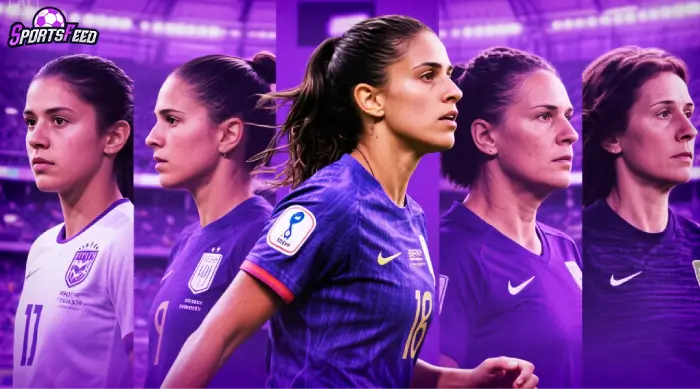
Maradona’s Coaching Stint (2008)
In Beijing 2008, Diego Maradona coached Argentina’s men’s team to gold, guiding stars like Lionel Messi and Ángel Di María. The 1-0 final win over Nigeria, with Di María’s goal, marked Argentina’s second consecutive Olympic title. Maradona’s passionate leadership, despite later controversies, inspired a star-studded squad, making this a memorable chapter in his storied career, per Wikipedia.
Canada’s Historic Women’s Gold (2020)
At Tokyo 2020, Canada’s women’s team claimed their first Olympic football gold, defeating Sweden 3-2 in a penalty shootout after a 1-1 draw. Goalkeeper Stephanie Labbé’s heroics and Julia Grosso’s decisive penalty sparked national celebration. This triumph, built on resilience and teamwork, marked Canada’s rise as a women’s football powerhouse, per Olympics.com.
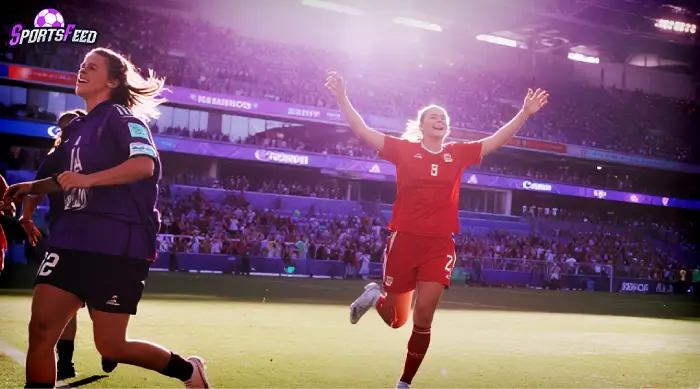
Highest Scoring Final (2024)
The Paris 2024 men’s final saw Spain edge France 5-3 in a thrilling, goal-laden spectacle at Parc des Princes. Fermín López’s brace and late strikes in extra time secured Spain’s second Olympic gold. The match, the highest-scoring Olympic final ever, captivated fans with its relentless pace and drama, per Sportstar, defining a new era of Olympic football.
Key Teams and Players to Watch in the LA Olympics 2028
The Los Angeles 2028 Olympics football tournaments will showcase electrifying talent, with 12 men’s and 16 women’s teams competing. Powerhouses like Spain, the USA, and Brazil, alongside rising stars, promise intense battles for Olympic glory.
Men’s Tournament Contenders
Spain, riding their 2024 gold, fields Fermín López, a Barcelona midfielder with dazzling vision. France, with Warren Zaïre-Emery’s versatility, aims high. Argentina’s Julián Álvarez, a clinical striker, targets another title. The USA, as hosts, rely on Kevin Paredes’ pace to shine on home soil.
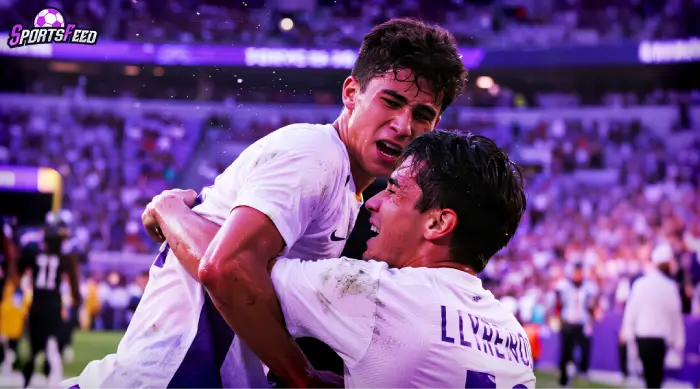
Women’s Tournament Favourites
The USA, with five golds, boasts Trinity Rodman’s lethal finishing. Brazil’s Gabi Portilho brings flair, chasing a first title. Germany’s Lena Oberdorf dominates the midfield, while Spain’s Salma Paralluelo leverages her speed to build on their 2023 World Cup triumph.
Rising Stars to Watch
Spain’s Diego López, a Valencia winger, dazzles with dribbling. Brazil’s Endrick, a 21-year-old Real Madrid striker, offers explosive goals. Canada’s Olivia Smith, a creative forward, shines brightly. The USA’s Jaedyn Shaw, an attacking dynamo, is set to captivate audiences.
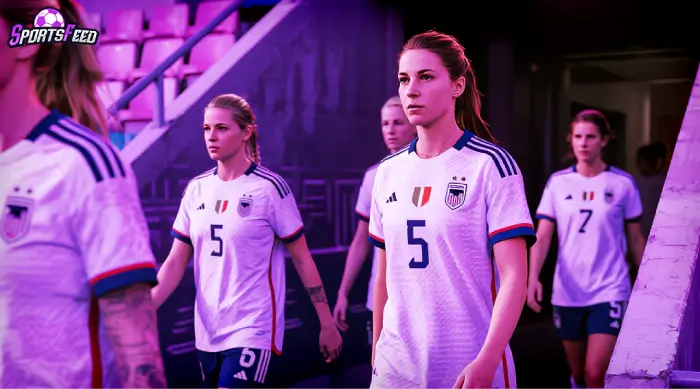
The Future of Olympic Football
The future of Olympic football, heading toward Los Angeles 2028, promises innovation and global growth, driven by youth development and inclusivity. The men’s U-23 format, with three over-age players, will continue showcasing emerging stars like Brazil’s Endrick, while the women’s open-age tournament elevates icons like Trinity Rodman. Enhanced digital streaming and fan engagement, leveraging platforms like X, will boost viewership, with IOC aiming for 500 million global viewers by 2028. Integration of AI analytics for refereeing and training, as seen in 2024’s VAR trials, will refine fairness and strategy.
Challenges persist, including club release disputes for men’s players and scheduling conflicts with FIFA events. Expanding women’s team slots to 16, aligning with men’s, is under discussion, per IOC. Olympic football’s focus on youth and gender parity will solidify its role as a vital complement to the World Cup, fostering talent and diversity.
Potential Format Changes in Olympic Football
The Olympic football tournament, a staple since 1900 for men and 1996 for women, faces potential format changes as the International Olympic Committee (IOC) and FIFA adapt to global trends and stakeholder demands. The current men's format, restricted to under-23 players with three over-age exceptions, balances youth development with competitive integrity, while the women's tournament features senior-level teams, rivaling the FIFA Women's World Cup in prestige. Discussions around format changes stem from scheduling conflicts with domestic leagues, player availability, and the growing popularity of football variants like flag football, set to debut in 2028. The IOC aims to enhance inclusivity and global appeal, potentially aligning the men’s tournament with the women’s by removing age restrictions or expanding squad sizes to match other major tournaments (e.g., 23 or 26 players instead of 18). These changes could address criticisms of limited squad depth and club reluctance to release players, though FIFA resists major shifts to avoid rivaling the World Cup.
Confirmed and proposed changes for Olympic football, particularly for 2028, include:
-
Women’s Tournament Expansion: The women’s tournament will increase from 12 to 16 teams, matching the men’s team count, to reflect the sport’s growing global popularity.
-
Men’s Tournament Reduction: The men’s tournament will decrease from 16 to 12 teams, potentially streamlining the event but reducing opportunities for emerging nations.
-
Squad Size Adjustment: Following 2024’s rule allowing alternates as full squad members, permanent expansion to 22 or 23 players is under consideration to align with FIFA tournaments.
-
Flag Football Inclusion: A 5-on-5 non-contact variant will debut in 2028, with NFL players eligible (one per team), potentially drawing attention from traditional football. These changes aim to balance competitive equity, player welfare, and global engagement, though they may challenge traditional football’s Olympic prominence.
Youth Development Role in Olympic Football
Olympic football serves as a vital bridge between youth competitions and senior international play, providing a unique platform for emerging talents to gain experience in a high-pressure, global environment. With its U-23 format and allowance for three overage players, the tournament strikes a balance between youth development and competitive intensity. Many iconic players, such as Lionel Messi (2008), Neymar (2016), and Pedri (2020), used the Olympics as a springboard to elevate their careers and cement spots in senior national teams. The condensed schedule, diverse opponents, and international exposure help accelerate player maturity and tactical understanding. For national teams, it’s an opportunity to assess future stars against elite-level peers, making Olympic football a crucial component of the global football development pathway.

Growing Importance of Women’s Olympic Football
With equal billing to the men’s tournament, women’s football at the Olympics has become a major milestone in the sport’s global growth. Unlike the men’s U-23 restriction, women’s teams compete with full senior squads, allowing the world’s best players to represent their countries at peak performance. This exposure has elevated the tournament’s prestige and competitiveness.
The Olympics also drive increased media coverage, sponsorship interest, and investment in women’s football infrastructure. Historic moments, like Canada’s gold in 2020 or the USA’s dominance, have inspired younger generations and expanded the sport’s global fanbase.
The Enduring Legacy of Olympic Football
Olympic football may not match the World Cup in scale, but its contribution to the sport is undeniable. It has launched careers, broken barriers, and brought nations together through shared passion. As we look toward LA 2028, the stage is set for another chapter in this rich footballing tradition.
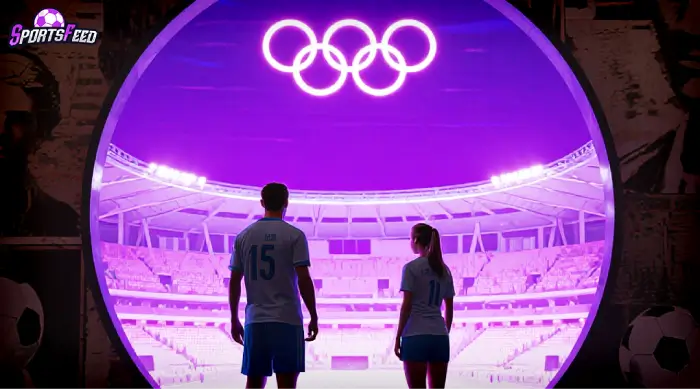
SportFeed: Updates on Olympics Football
SportFeed aims to update all on football at the summer olympics schedules, results, and standings. By providing real-time coverage, analysis, and highlights to ensure fans stay connected with every match worldwide.
FAQ
- Why is Olympic men’s football a U-23 tournament?
Olympic men’s football is restricted to U-23 players to prioritize youth development and avoid clashing with the World Cup, ensuring the Olympics remain distinct while fostering emerging talent, per FIFA rules.
- Which country has won the most Olympic football gold medals?
Hungary and Great Britain each have three Olympic men’s football gold medals, leading the historical tally. Hungary won in 1952, 1964, and 1968, while Great Britain triumphed in 1900, 1908, and 1912.
- How does Olympic football qualification work?
Teams qualify through continental U-23 tournaments, like the AFC U-23 Asian Cup or UEFA U-21 Championship. Each confederation is allocated specific slots, with 16 teams selected for the Olympics, per IOC and FIFA guidelines.
- How is Olympic football different from the World Cup?
Olympic football is a U-23 tournament (with three over-age players allowed), focusing on youth, while the World Cup is open to all ages, featuring senior national teams, making it more prestigious and competitive.
- What are the age rules for Olympic football?
Men’s Olympic football restricts players to under 23, with three over-age players allowed per team. Women’s Olympic football has no age limits, aligning with senior international competitions, per FIFA regulations.
- How many teams compete in Olympic football?
Sixteen men’s teams and twelve women’s teams compete in Olympic football. Men’s tournaments feature U-23 squads, while women’s include senior national teams, held every four years, per IOC standards.
- How do teams qualify for Olympic football?
Teams secure Olympic spots via continental U-23 championships, such as CONCACAF’s U-20 Championship or CAF’s U-23 Africa Cup. Top teams from each region fill the 16 men’s and 12 women’s slots.
- Can professional players compete in Olympic football?
Yes, professional players can compete in Olympic football. Men’s teams allow U-23 professionals plus three over-age players, while women’s teams have no age restrictions, featuring professional senior players, per FIFA rules.
- Are Olympic football medals considered prestigious?
Olympic football medals are prestigious but rank below World Cup titles due to the U-23 format for men and less global focus. They remain significant for youth development and national pride, per the IOC.
- Do clubs have to release players for the Olympics?
Clubs are not obligated to release players for Olympic football, as it’s not a FIFA-mandated date. This leads to conflicts, especially for over-age players, impacting team selections, per FIFA and IOC regulations.
